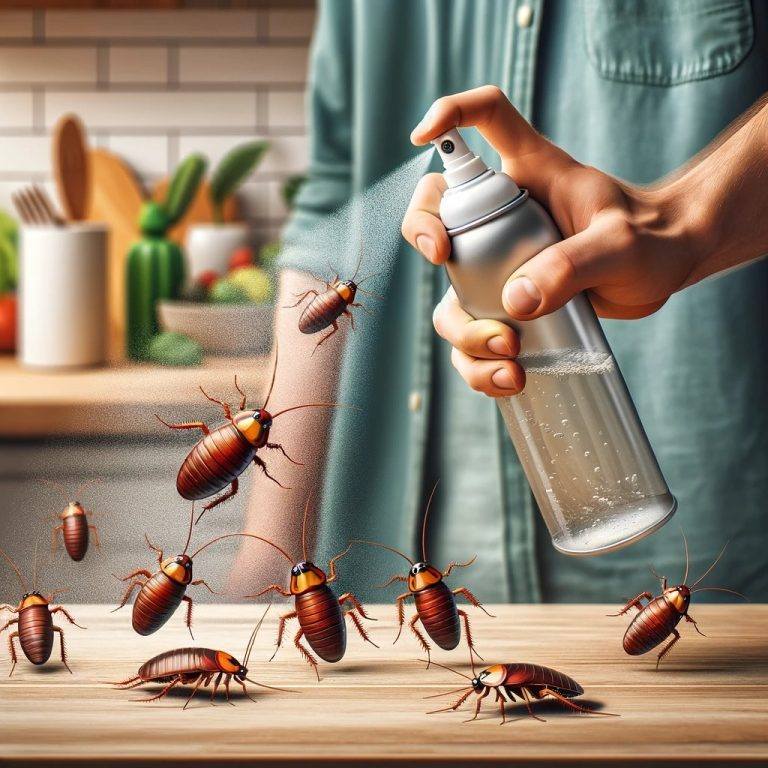ADVERTISEMENT
#### Instructions:
1. **Prepare the Bottle**:
Start by filling your spray bottle with 1 cup of water. A standard spray bottle (about 16 oz) will work perfectly for this recipe.
2. **Add Vinegar**:
Next, add 1 cup of white vinegar to the bottle. Vinegar is an effective and natural insect repellent that helps disrupt the navigation of pests like ants and cockroaches. It also acts as a cleaner, so it will help keep your home tidy while repelling bugs.
3. **Incorporate Essential Oils**:
Add 20 drops of peppermint essential oil and 10 drops of citronella essential oil. These oils have a strong scent that mosquitoes and other insects find repellent. Peppermint oil also helps to deter ants and cockroaches, while citronella is particularly effective at keeping mosquitoes away. You can also add tea tree oil, known for its antimicrobial properties, which helps keep pests at bay.
4. **Add Dish Soap**:
Add a tablespoon of dish soap to the mix. The dish soap helps the solution stick to surfaces and ensures that the oils are well-distributed in the water. It also helps to break down the oils and vinegar, making the repellent more effective.
5. **Shake and Spray**:
Put the spray bottle lid on tightly, then shake the bottle well to combine all of the ingredients. The dish soap may cause some bubbles, but that’s okay! Simply shake the bottle before each use to ensure the ingredients remain mixed. Once mixed, your homemade insect repellent is ready to use.
6. **Spray Areas Affected by Pests**:
To effectively use the spray, target the areas where you’ve noticed the presence of cockroaches, ants, or mosquitoes. Common spots include:
– **Kitchen counters** and cabinets (for cockroaches and ants)
– **Window sills** and doorways (to block mosquito entry)
– **Bathrooms** (to deter ants and cockroaches)
– **Corners of rooms** and under furniture (for cockroaches)
You can also spray around entry points like windows, door cracks, or any other areas where pests are likely to enter your home.
### Why This Repellent Works
Now that you know how to make the insect repellent, here’s why it works so effectively against cockroaches, ants, and mosquitoes:
– **Vinegar**: Cockroaches and ants dislike the strong, acidic scent of vinegar. When you spray it on surfaces, it disrupts their ability to communicate and navigate, effectively driving them away. Additionally, vinegar is a natural cleaner, so it will remove the food scents that attract these pests.
– **Peppermint Oil**: This essential oil has a strong, minty smell that repels cockroaches and ants. It also acts as a deterrent for mosquitoes. When cockroaches and ants encounter peppermint oil, they are forced to move away from the area.
– **Citronella Oil**: Known for its effectiveness in repelling mosquitoes, citronella is a go-to ingredient in most commercial mosquito repellents. It has a strong scent that mosquitoes and other insects can’t stand, helping to keep them away from your living spaces.
– **Tea Tree Oil**: This essential oil has natural antibacterial and antifungal properties, which can help prevent the spread of any diseases carried by pests. Its strong aroma also acts as a deterrent to cockroaches and ants.
– **Dish Soap**: The dish soap helps the solution adhere to surfaces and ensures that the essential oils stay in place, increasing the effectiveness of the repellent.
### How to Use Your Homemade Insect Repellent
Using your homemade insect repellent is simple. Here are a few tips for best results:
1. **Target Common Entry Points**: Pests tend to enter through windows, doors, and cracks in the walls. Spray these areas regularly to create a barrier that prevents insects from entering your home.
2. **Spray on Surfaces**: Regularly spray your kitchen counters, bathroom sinks, and any other areas where pests are likely to roam. Cockroaches, in particular, love dark, damp places, so be sure to spray under sinks, behind appliances, and in cracks and crevices.
3. **Reapply as Needed**: The scent of essential oils will naturally dissipate over time, so it’s important to reapply your repellent regularly. This will keep your home pest-free and ensure that the insects stay away.
4. **Safe for Pets and Children**: Unlike chemical insecticides, this homemade repellent is made from natural ingredients that are generally safe for pets and children. However, it’s always a good idea to do a patch test on a small surface area before widespread use to make sure it doesn’t cause any irritation.
### Additional Tips for Preventing Pests
While the homemade repellent will help keep pests at bay, here are a few additional tips to prevent infestations:
– **Seal Cracks and Gaps**: Ensure there are no cracks or gaps around windows and doors that pests can use as entry points.
– **Clean Regularly**: Keep your home clean and free from food crumbs or spills. Cockroaches and ants are often attracted to food sources, so keeping your home tidy is a great preventative measure.
– **Eliminate Standing Water**: Standing water attracts mosquitoes, so make sure to fix any leaks and avoid leaving water standing in trays under plants or around sinks.
### Conclusion
This powerful homemade insect repellent has been a game-changer in helping me get rid of cockroaches, ants, and mosquitoes in my home. With a few simple, natural ingredients like vinegar, peppermint oil, citronella, and tea tree oil, you can create an effective, non-toxic solution to keep pests at bay. Not only does it help protect your home from these unwanted guests, but it also provides a safe, eco-friendly alternative to harsh chemicals. Try this DIY insect repellent and enjoy a pest-free, healthier home!
ADVERTISEMENT
